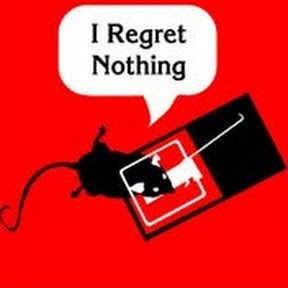As the sheer quantity of clothing available to the average American has grown over the past few decades, everything feels at least a little bit flimsier than it used to.
The most obvious indication of these changes is printed on a garment’s fiber-content tag. Knits used to be made entirely from natural fibers. These fibers usually came from shearing sheep, goats, alpacas, and other animals. Sometimes, plant-derived fibers such as cotton or linen were blended in. Now, according to Imran Islam, a textile-science professor and knit expert at the Fashion Institute of Technology in New York, the overwhelming majority of yarn used in mass-market knitwear is blended with some type of plastic.
Knits made with synthetic fiber are cheaper to produce. They can be spun up in astronomical quantities to meet the sudden whims of clothing manufacturers—there’s no waiting for whole flocks of sheep to get fluffy enough to hand shear. They also usually can be tossed in your washing machine with everything else. But by virtually every measure, synthetic fabrics are far inferior. They pill quickly, sometimes look fake, shed microplastics, and don’t perform as well as wool when worn. Sweaters are functional garments, not just fashionable ones. Wool keeps its wearer warm without steaming them like a baked potato wrapped in foil. Its fibers are hygroscopic and hydrophobic, which means they draw moisture to their center and leave the surface dry. A wool sweater can absorb a lot of water from the air around it before it feels wet or cold to the touch
A significant amount of polyamide or acrylic is now common in sweaters with four-digit price tags. A $3,200 Gucci “wool cardigan,” for example, is actually half polyamide when you read the fine print. Cheaper materials have crept into the fashion industry’s output gradually, as more and more customers have become inured to them. In the beginning, these changes were motivated primarily by the price pressures of fast fashion, Islam said: As low-end brands have created global networks that pump out extremely cheap, disposable clothing, more premium brands have attempted to keep up with the frenetic pace while still maximizing profits, which means cutting costs and cutting corners. Islam estimates that a pound of sheep’s wool as a raw material might cost from $1.50 to $2. A pound of cashmere might cost anywhere from $10 to $15. A pound of acrylic, meanwhile, can be had for less than $1.
This race to the bottom had been going on for years, but it accelerated considerably in 2005, Sofi Thanhauser, the author of Worn: A People’s History of Clothing, told me. That year was the end of the Multifiber Arrangement, a trade agreement that had for three decades capped imports of textile products and yarn into the United States, Canada, and the European Union from developing countries. Once Western retailers no longer had meaningful restrictions on where they could source their garments from, many of them went shopping for the cheapest inventory possible.
The same thing is happening to every commodity and service – “enshittification” isn’t just an internet thing.
It all boils down to psychopathic greedy executives and boards squeezing every last cent from consumers (and workers) to make themselves richer. Prices and therefore corporate profits keep going up, pay keeps going down (because it’s not inflation-adjusted) and the quality of everything is going down the shitter, just to benefit the 1%
It’s not the “fault” of amoral individuals, no. This is simply the system working as intended. A system where capital translates to political power will inevitably lead to capital accumulation. Corporations are only for generating more capital and more profits to their owners. Profits they can turn into more capital elsewhere.
It’s silly to expect a “good” version of this where the people at the top… don’t put their interests first? Like why would they ever do that? If someone at the top doesn’t fight for profit like a shark, they will lose their spot and risk becoming a worker, or dooming their family and future generations to become workers.
These people are just doing what’s best for them. And everybody around says “hey! that’s bad, you should put aside your self interest for our self interest!”.
Bro the problem is THE SYSTEM. As long as we have this system, we will always have the same people in power, the same problems, and the planet will die in 50 years. You can fight reality all you want, but that’s where we’re at.
Its not like they were dropped into the system and just made the best of their situation. The capital class created this system.
Its not like they’re trying to change it for the better, they’re willfully encouraging the enshittification of the systems they created.
Obviously, therefore, competing against the system of moneyarchy would be the only possible means of displacing its dominion on the world, so, …
… how come nobody’s doing it properly, or at-scale??
I’m talking about a competing economic-system, not competing against a few companies within moneyarchy’s regime.
: )
It’s not “moneyarchy”, it’s capitalism. And I mean, the system that properly competes against it, and was/is done at scale, is socialism.
Socialism or barbarism is becoming more and more true, and more like a cry for immediate choice instead of a future hypothetical.
Anybody who ignores the Financial Class, and how civilization’s laws are formed in concordance with money-lobby/authority, isn’t competent to be discussing what system we are living-in.
Capitalism without highjacking-of-the-system-of-laws is capitalism.
Once highjacking-of-the-system-of-laws is included, it changes to moneyarchy.
As it exists, it is a mixture of oligarchy & corporate-moneyarchy, but it definitely isn’t “just” an economic system, it is a world-governing regime.
https://www.vox.com/2014/4/10/5601062/oil-curse-explained
Perhaps you didn’t know that perjury is S.O.P. for tobacco companies, but, of course, prison-time for contempt-of-court can’t happen on a corporation, only on us…
Go look up The Panama Papers, & see if moneyarchy isn’t the correct term for what the evidence shows to be actuality…
https://en.m.wikipedia.org/wiki/Panama_Papers
Moneyarchy is the correct & proper term.
As for socialism, whose concept of socialism are you claiming competes against moneyarchy?
Sweden’s seems insane: EVERYbody pays huge taxes AND gets welfare…
Don’t they understand that the more “recycling” of money per unit of result, the more lossy their economy becomes, the higher the “friction” or “viscosity” ( pick your metaphor ), and the smaller the percentage of their effort that actually produces results??
Which Socialism?
- codependency
- interdependency
- ideology-centered
- practicality-centered
- things I haven’t thought-of go here…
I’ve never seen a governmental version of Socialism that wasn’t the codependency-version or the ideology-religion one.
Meritocracy & Socialism … what is in the intersection between those, on the Venn diagram? Nothing?
“you can’t have any meritocracy with socialism” seems to be the belief, among many, but Sweden’s education system seems to get meritocracy right ( unless I’m remembering another Scandi country’s version ), where they simply don’t permit any bypassing of the national meritocratic education system…
Because of political-motivation, objectivity isn’t permitted in this world, and neither is practicality, from what I’ve seen…
And that kind of meta-rule wrecks everything else.
Hell, even gaslighting about “Representative” Republic being “democracy” is so normal I keep forgetting to put that back in viewable place…
As some have noted, the ones who rule make certain that people have things other than the actual issues in-view…
and that is 1 of the characteristics of the -archy regimes, where the population is just herd-animals, consumed by the powers that really run the world ( for-profit corporations parasitically feed-on the human-herd, manipulating humanity’s awareness to remain fed-upon, is one accurate metaphor )
The whole narcissism/machiavellianism of orienting government to the most-successful narcissist-machiavellian, and through “elections” making certain that competency & responsibility are punished, in the “game”, by giving authority to the narcissist-machiavellian ones, preferentially…
Reward-systems are feedback loops and have consequences…
Try convincing … anybody … that Boris Johnson is a thorougly-responsible person…
Highjacking of authority from responsibility and accountability … is sooo complete, now…
How come people can’t see that?
Anyways, I meant not national-level competing ( in a different country ), I meant:
IF you find moneyarchy in the US to be bad, then why don’t you create an alternative-to-moneyarchy economy within the US??
You want socialism, or barbarism, or maybe you equate the 2 ( from your phrasing I can’t know which ), so, why don’t you form socialism-competing-against-moneyarchy in the US?
Why don’t you & all the believers-in-socialism create socialism in the US?
Is there some law that prevents socialist businesses from existing??
Is there some law that prevents socialist groups of businesses from existing??
The fact that there simply doesn’t seem to be ANY such competing-economy IS EVIDENCE that either it isn’t permitted by government, or that it isn’t permitted by the moneyarchy regime, or that the socialists, themselves, aren’t competent to do it, or all 3 of them, simultaneously.
DECADES everybody has had to be producing alternative-economies within the US, and … where are they?
I just realized that I’m including perspective that is required, and not common.
“Slicing Pie Handbook” is a book on startup equity-slicing.
Without understanding how equity needs to be properly distributed, and … ah, yes, “Founder’s Dilemmas” is also required … when people who aren’t responsible gain authority, you CANNOT make the business/system/regime work… the ones who gained authority without responsibility effectively highjack the enterprise, holding it hostage to their whims/demand/extortion, and … if the contract that is in-place permits them that authority, the enterprise may need to die…
Remap that to country, and corporations, instead of an individual company with persons, and the same highjacking happens, especially when financially-emplaced political-parties ( and, through them, their financial backers ) are the highjackers.
Responsibilityarchy is the real requirement, but it’ll never be tolerated by any incumbent political power, left or right.
Not responsible AND accountable? break them from authority, then.
Have you got any idea how long that kind of idealism would be allowed to live?
1 week, maybe?
Socialists have the same ability to create businesses as anybody else, so why haven’t they created socialist businesses, & multiplied the things until 20% of the businesses in the US are socialist operations??
even 5%??
There is something fundamentally wrong with what the evidence is showing, and its showing that that apparently can’t evolve…
I don’t even know where to begin with all this… It’s like insane and ameribrained in a way I haven’t seen in a while…
Our current systems of law and government are an intrinsic part of capitalism. The modern state, with the separation of powers, representative democracy etc. literally was born, as in was created, by the bourgeoisie after their capitalist revolutions that overthrew the monarchies in Europe in the 18th and 19th centuries.
Capitalism can’t “hijack” the state or whatever. The state is an intrinsic tool of the capitalist system and of the capitalist class to be able to enforce capitalism in the first place.
Then, outside of the US, literally no one would ever say Sweden is socialist. That is completely absurd. Sweden is a capitalist country with a welfare state. Remember that the state is just a tool of the bourgeoisie to maintain control and enforce capitalism. A welfare state is just an idea of using the state to “ameliorate” (or some would say bribe) the working class in the capitalist core to support imperialism abroad and the exploitation of peoples in the global south.
Public healthcare and social security are not socialist or capitalist. But they usually exist in capitalist systems.
What I meant by socialism is China, the former USSR, Cuba, Laos, Vietnam and the DPRK.
Socialism is when the means of production are collectively owned by the workers. Production is slowly directed towards use-value, eliminating commodity production.
Capitalism is when the means of production are privately owned by individuals and corporations. Production is directed towards trade-value, turning everything into a commodity.
I won’t go on because you wrote a huge wall of crazy bullshit. I just wanted to try to provide some clarity on the beginning of it at least.
China is a state capitalist regime lol.
The classic “non-western governments that are not lapdogs for imperialism are regimes”.
All this begs the question:
Why not learn crochet/knitting, & make one’s own, of whatever yarn one wants??
( that will happen, for me: I’m fed-up with things that never fit right, or are wrongly designed )
Yessss I’m am want to learn a sewing!
I agree a 100%. It’s not about the individuals, we are all replaceable. It’s about the system, about capitalism. I think it weird how often people stumble over examples like this or enshitification while this is just how capitalism works. Reforms on a small scale and only for individual problems won’t work, we need to collectively decide to change the system that we live in. But people are too deep in their imagination of a system that usually works and just sometimes fails.
Ideology. The reason why people keep thinking the issue is “individuals”, or “croneyism”, or that small moral based reforms will fix things… it’s ideology.
People don’t look at reality in a materialistic way. They have ideas of how things should be and shape reality to fit that. If it doesn’t, the issue is reality and not the idea. So the fix is to “change reality” (through only propaganda, media and more ideology, reframing etc.) so it looks more like your idea.
Don’t just blame execs, we need to blame ourselves. We have chosen price over quality for decades. Because things were cheap, we could get new things more often, and so we did. The appetite for keeping and using this one thing for most of our lives completely disappeared. Now, we don’t have a choice.
i mean yeah this is true for most well-off people, but there is a huge amount of people who simply cannot afford anything but the cheapest version.
True, but not what I meant. You see it all the time where people make it a point to buy cheap because they consider the thing disposable. Even when they can afford the quality brand, they opt for the junk line because they don’t care to keep it long term. We go through so much disposable clothing, for example, that even the counties we were shipping our donated goods too don’t want them any more.
Even when they can afford the quality brand
I am not sure I believe in quality brands any more. Frequently they name brand and the knockoff are made on the same assembly line/sweat shop. The Name version might be better quality but not by a large margin, and rarely enough to justify the price difference.
Yes, that’s the point of the article.
EDIT: To clarify, it didn’t use to be that way. There use to be a big difference between “top tier” and “bottom tier”. Now, not so much. If you want true top tier stuff, you often have to go custom and/or hand crafted.
deleted by creator
But what choice do you really have if you need to constantly minmax your life as a poor person? It’s expensive to be poor.
Knitting my own garments (sweaters, scarfs, etc) has made me appreciate how long it really takes to make actually good clothing that’s meant to last. Thankfully more and more people are getting on board with the idea of “slow fashion”, with a significant amount of younger people especially during the pandemic picking up knitting and crochet as well as seeing more of the value it possesses than before.
I’ve been knitting for a decade but only made my first pair of socks during the pandemic. I bought some wool from a reputable seller in fun colors. It was so fun and they were so comfy, I made several more.
I almost never wear anything other than my knitted socks these days. They’re just so daggone comfy and they keep my feet warm yet they never feel sweaty, except on extremely hot days when I’m outdoors.
Wool socks are absolutely luxurious to me now. 10/10 recommend knitting socks if you haven’t already!
And “run” the heels and ball of the foot so they felt down and last longer: https://www.youtube.com/watch?v=4fKKLOUNOHU
Mazing
I’ve been making my own clothes for more than a decade now and I’ve dabbled in knitting and crocheting, but I’ll admit it’s a bit too much for me. I once made a dress where I didn’t have quite enough fabric so the skirt ended up too short and thought, oh, I’ll just a crotchet a nice 15 cm wide decorative border. Problem was it was a circle skirt so the hem was 4m long. Shit took me 15 damn hours lol. I respect people who have the patience for it or just find it fun but that’s not me.
I haven’t been knitting since my grandma taught me as a kid, but a couple years ago I just fancied a cotton scarf… and realized that getting a cheap knitting machine and some yarn, was cheaper than getting a scarf made with actual cotton instead of some poly-plastic trash.
Sure, it took some time getting set up, refreshing that old knowledge, and making a nice cotton pom-pom to put on one end, but on one hand it ended up being cheaper in raw cash, and on the other I got exactly what I wanted.
I think a lot of people have noticed clothing quality going down for a while, especially if shopping fast fashion brands; but I thought it was especially interesting how the decline in quality permeated through the high end brands as well.
When I saw the Ben Schwartz photo referenced in the article, I had assumed it looked worse since it was probably not as nice a brand as Billy Crystal’s sweater. I was surprised to see it was likely a 400USD sweater that looked like that.
As the article notes at the end, it is still possible to find fully natural clothes, but I wish they were easier to locate.
I’ll admit, the reason I ended up reading the whole article were the words “Ben Schwartz.”
There is no better example of this that I can think of than the clothes sold under the Ralph Lauren labels. If you browse through their website you will see a plethora of labels all meant to cater to a certain price point, from Collection level down to retail store. A former work colleague who has enough money to buy collection wear, told me this year that after dropping over 5K on a supposedly 100% cashmere sweater and vest set (labeled as such on the site) when they received it they discovered blended materials listed on the inner tag of the garments, let alone that they began to pill and unravel after one wear. One.
Mind you I would never spend that kind of money on clothes so I don’t have too much sympathy, but share the story to say that Lauren is typical of a ton of “designer” labels now, throwing out tons of promotion for their supposedly high quality garments that are all just as crappy construction as Walmart clothes seem to be. It’s insane.
As a kid, my family always went to tailors for our clothes. We bought fabrics we liked, they measured us, made the garments, done deal. Same with knits. Suits always fit exactly, dressed were a snap, pants all flattered in all the right places. This was not considered “chique” or whatever. Everyone we knew did this. We did not pay a fortune. Buying clothes at department stores was considered far more expensive and a somewhat strange thing to do at the time.
I wish that the idea of supporting and nurturing real artisanship at the local level in all communities were more of a thing. Where I do find them, there seems to be way too much hipster/exploitation vibes around it which is completely counter to the idea of honing a craft and sharing that skill for not just a living but the betterment of people around you.
Maybe some effort at finding where these people still exist and supporting them would be a good way to turn some of the fast fashion (trash fashion) mindset and practices around.
I wish it was easier to find quality clothes. Nearly every piece of clothing I find has synthetics mixed in.
I would gladly pay a lot more for good, ethical, quality clothes.
It’s just crappy that good, ethical, quality clothes do cost a lot more. I absolutely understand why, but man does it suck for the average consumer nowadays.
I’ve been slowly upgrading and updating my wardrobe over the last couple of years, and I’ve bought a lot second hand and then been trying to put my money towards the most sustainable/ethical choices that I can when I buy new stuff. (And I realize that being able to do that is a luxury, too.)
It’s not crappy and it doesn’t suck. Products should reflect living wage labor costs.
If you can only afford one ethical item instead of ten fast fashion ones, it’s a good thing. Value your stuff, learn to repair it, maybe help turn back this trend of wearing a new thing every day.
Well, the problem not only lies in synthetics though. Cotton is certainly great and all, but it is hard to get fair trade and actually organic cotton. And wool is hardly ethical as you always have to keep animals and sheer them. Leather? Obviously not ethical. Maybe linen and other natural fibers, but they usually have very specific applications in clothes. But yes, I agree, I would definitely gladly pay for good, ethical, quality clothes, too!
I’ve become of 2 minds about leather footwear & gloves:
The primary alternative to leather is plastic, which, when it breaks-down, sabotages the food-web, right?
Leather doesn’t do that.
I honestly don’t know what The Right Answer™ is, on that one, anymore.
I’m usually vegan, btw, not for ideological/religious reasons, but simply because doing otherwise blocks my ability to reach the meditations I need.
I do find butchering animal lives for a mere few-meals unethical, but refugee Buddhist monk Kelsang Gyatso pointed-out in one of his books, IF a person has anemia, THEN the right antidote is eating red meat.
He’s ordained, a Geshe, and he is recommending that right in his dharma.
Years-enduring clothing is a much less desolating consumption than needless meat-eating.
Exactly as that brilliant psychological truth in the Christian bible shows, naive truth, aka symbolic “truth”, is syrupy-sweet in one’s face/mouth, whereas digested & real, experience-induced-understanding Truth, is bitter.
See for yourself:
https://www.biblegateway.com/passage/?search=Revelation 10%3A8-10&version=CJB
Leather is basically cellulose from animal skins
There are many other sources of cellulose from [mushrooms](Are Mushrooms the Future of Alternative Leather? https://www.nytimes.com/2022/12/14/business/leather-fake-mycelium-mushrooms-fashion.html) to cacti to even pineapple
These are still fairly young materials and aren’t super common. You’re starting to see them more often but usually in smaller runs of more expensive brands. I personally haven’t bought any of these alternative leathers but next time I need to buy shoes I’m going to look into them again
Looking forward to more better options coming. In the meantime, personally I think I’d rather buy a durable leather thing than a disposable plastic thing. Idk just been my line of thinking lately. Am not vegan or anything tho.
Leather is more ethical than plastic alternatives because leather is generally a byproduct. Cows generally aren’t raised just for their skins. The skins just happen to be product of meat processing. And if we wish to fully respect the life of the animal that we’ve raised for meat, then it’s important to use every part possible.
And like you mentioned, leather is significantly more durable, hardy, and longer lasting than plastic alternatives. So instead of having to buy a new fake-leather coat every couple years, you can keep the same one for decades.
Eh. I get you but. I don’t remember the details but I think the leather is a byproduct line of thinking doesn’t necessarily end up being true in the industrialized system unfortunately. Sorry haha. But yeah in general I’m all for things lasting longer and using all the parts of the thing 😊
There is so much to unpack here holy moly. Ignoring the religious stuff, there are lots of alternatives to the things you’re listing, if you’re concerned. You say truth is bitter, but overlook some glaring ones provided by the modern era: vitamin supplements and alternative leather made from plants.
Those things might have been true when the monk spoke them, but time marches on and modern advancements leave some pieces of wisdom behind in the past.
Oh, exactly. I’ve hit a point where I could buy nice clothes on occasion if I had a reason too, but with expensive clothes being just as quality errant as low end brands, I find myself having very little reason to upgrade my wardrobe.
If I could find a reliably quality brand, I’d certainly be more inclined to start changing out my closet.
As it stands right now: I can basically throw out any polyester clothes because I never wear them, even if I like the pattern.
deleted by creator
For t shirts I always sing the praises of Gettees. Tiny “factory” of half a dozen people making extraordinarily high quality and durable shirts in Detroit. Most of the people doing the sewing are former auto upholstery stitchers from the car factories. The quality is truly the best I’ve ever encountered. https://gettees.us/
I’ve been quite happy with https://www.american-giant.com/collections/cotton.
Quality “first world” labor and cotton. No slave labor, no bull shit. That’s the brand.
Everything is crap now.
Used to be you’d have cheap stuff and good stuff. Now it’s just cheap stuff, and cheap stuff with more markup.
The Discworld Vimes Boots theory doesn’t even work any more. We all get shafted, but some people have enough money to not care.
Corporate consumer brands are crap now. If you want quality you have to buy from craftsman with janky websites they built in 1995 or sometimes on Etsy. There are still tailors and leather workers and so on doing their thing, but you won’t find them on Amazon.
I’m tired of disposable clothing.
I did a deep-dive reading and watching videos learning about sturdy and long-lasting fabrics and materials. Learned a bit about tailoring for durability, too. (For example, Duluth Trading shifted the inseams on their Firehose pants forward. The forward seams don’t rub on each other when you walk, and so the inner thighs don’t self-destruct as quickly.)
There are also a ton of excellent resources on how to mend clothing and properly care for it. And it doesn’t take much effort, really.
So now I have a bunch of older clothes, with subtle repairs, still in good shape. Sure, I’d like some sexy new trendy disposable stuff so I can be one of the cool kids - but that’s how fast fashion gets its claws into you. Preying on our magpie-like desires for shiny new things makes somebody big bucks. (And creates huge waste and exploits desperate workers.)
Buy sturdy “classic” clothes. Keep them in good repair. Fight the system.
Any particular resources that you trust to share proper information?
A good place to start on YouTube is Bernadette Banner’s channel. She is a clothing historian, so there’s a lot of historical and historical recreation stuff, but she also has a few basic repair and tailoring techniques videos. She wrote a mending book that I hear is much more in-depth than her videos (I haven’t read it). https://www.barnesandnoble.com/w/make-sew-and-mend-bernadette-banner/1139915226
Patagonia Wornwear has a lot of repair instructions for outdoor gear (you don’t have to buy their repair materials). https://wornwear.patagonia.com/repairs
Reddit “visiblemending” and “invisiblemending” are also very good resources.
Some thoughts.
I understand that clothes that are ethical and of quality cost a lot more, but up to a point. Certain brands raise prices because they can hang a ‘green’ label on it. For instance, as a vegan i bought plastic shoes (not happy with that, obviously) and they were pretty cheap. Then, companies discovered they could call those shoes ‘vegan’ and the price went up, up, up, for those same cheapo shoes.
One of the reasons i learned to sew is that i hope to have slightly more control over the fabrics i choose.
I have a cotton sweater in my closet that is about 30 years old. It still feels very thick and it looks fine. The thing goes in the dryer and everything. Nowadays, cotton is so flimsy, it’s ridiculous. I’ve had clothes that i put in the washer before wearing them for the first time and they came out shredded.
But even cotton - or so i read - is not that environmentally friendly, because it uses a ridiculous amount of water, not to mention that some dyes are probably also terrible. Even wool sometimes undergoes harsh treatments that are not environmentally friendly at all.
I feel like the amount of effort we have to make to choose our clothing is ridiculous and tiring. Yet, with our actions we need to give a signal that we want changes (as a side note, just like i buy pants in the men’s department, because pockets). Actions through what we wear, but also political choices, because so many parties encourage greed in the name of ‘the economy’.
Textile processing has always extracted a terrible price from the environment. The difference today is that there are orders of magnitude more humans, owning orders of magnitudes more pieces of clothing. When your wardrobe consisted of 8 pieces of clothing and you shared an entire continent with millions or tens of millions of people, production was pretty labor and material intensive but you had the whole earth to dilute it.
I’m currently (For a couple years now) on a merino wool kick. Is the farming of merino sheep, the transport to (mostly Vietnam), washing, combining, dying, fabrication, and then shipping half way around the world resource intensive? I’m sure it is. But I’m tired of throwing things away all the time, and the wool is comfortable and (so far) durable. It’s also pretty expensive, but I’m hoping that the durability and resulting low(er) impact is a net gain.
Yes, definitely. It’s not only more people, but marketing tactics have grown terrifyingly fast and vicious. It’s hard to fight when you know there are tons of people who are getting paid for thinking the entire day of how to boost sales.
Last week i heard someone tell me that they made 25% profit, but the CEO started firing people because they had aimed for some ridiculous number; 75% or so.
I’ve recently become aware of mulesing, an appalling practice used on Merino sheep in Australia and NZ due to a specific fly problem. The problem is that most merino wool is from those countries.
Also, most fabric generically labeled ‘wool’ is mostly merino from mulesinged sheep.
Ethics conscious knitters, crocheters and weavers are aware, and merino yarns certified as mulesing-free are on the market now.
Knowing country of origin and wool type is another reliable way to avoid endorsing this practice, but again most manufactured clothing or even fabrics will not give the necessary information.
I think our choices don’t matter. Unless there are actual competitors with actual relevance in the industry that do the right thing and we are not priced out of supporting them, the only way is to make laws against this crap. Not that it’s easy, but it’s the most realistic way, I think. Unless, of course, we all join together and look for a way to make ethical clothing that is not too expensive (all while praying that the big brands won’t crush us with their infinite money)
I definitely think that the emphasis should be on the industry and making laws. However, the industry should get signals from us that there is a market for change, i think. I don’t think we are completely powerless; we might feel alone in doing little things, but there are many people who also feel alone and powerless, but together they do make an impact.
That’s why i never have been hesitant to send mails or ask for certain things. For instance, i asked a franchise local supermarket to sell certain vegan products and they listened.
And i know there are vegan facebook groups (i don’t use it, but some friends and family do) which group together to mail stores, or push for change in whatever way they can. Also, i donate to certain organizations who fight for change, for instance they successfully lobbied in europe to allow vegan burgers to be called that, despite strong push back from the meat industry to stop them calling vegan food ‘burgers’, ‘milk’, etc I also am a member of a political party that advocates strongly for all the changes that are dear to my heart and thankfully, they are steadily gaining support in my country.
Side note about pockets: Duluth Trading women’s pants have multiple ginormous pockets, and about half have crotch gussets or anterior inseams to avoid chub-rub destroying the pants.
I’m not in the US and i don’t think we have that here, unfortunately.
I am learning to sew and should i embark on starting to sew some pants, they will have pockets, big enough to carry my phone without risking it falling out.
Oh, and i haven’t mentioned it but i’m also interested in repairing my clothing as much as possible. Particularly visible mending has my interest. There was a lively subreddit, but i don’t think we have such a community yet, though there is a sewing/repair community
You can add pockets to the pants you buy, too. This video by Morgan Donner is adding several examples of types of pockets to skirts, but the process is the same. https://www.youtube.com/watch?v=7pE_nrHKd58
And there’s this one by Bernadette Banner https://www.youtube.com/watch?v=thlzJj1EHiY
Thigh pockets are really great for phones. You can make visible patch pockets or subtle welt pockets and you can customize to the size of your phone.
Why didn’t i think of this, thank you! Both channels are great.
I got a merino wool sweater for $10 at the thrift shop and I felt like a god.
Aside from purchasing secondhand, I haven’t found a way to get away from “New
Cokeclothing” and I was wondering whether anyone had any recommendations on that front.They are a little more expensive than some places, but
is my go-to for higher quality and ethical clothes.
There is a generation of little old ladies who are passionate about sewing, but have no-one to sew for. Their kids are grown, and their grandkids don’t want handmade clothes. Ask at a senior center or at a local (not chain) fabric shop, seek out one of these ladies and hire her to sew for you. Or barter: help her around the house or garden or drive her to appointments or to get groceries, and in exchange she sews clothes from fabrics and patterns you choose. Or tailors used clothes to make them fit you better, or mends your worn clothes, etc.
I honestly can’t figure out how I feel about the idea of requesting sewing/knitting from retired people. That said, I’d love anything I’d get from them. Handmade clothes are worth cherishing.
Provided you’re paying them, I can’t see why you would need to feel uncomfortable. Many of them would probably be overjoyed to collect some cash doing something they like doing anyway—seniors whose income was just enough pre-COVID are really struggling now.
It’s more the requesting bit. I’d be happy to buy what would probably be a $150 shirt or sweatshirt but the act of requesting it feels odd. If I were already in contact with a few seniors with a knitting/sewing hobby then it would be perfectly kosher, but soliciting clothing feels exploitative, unless it’s handled carefully.
I try to stay off the coke myself to be honest
3 thousand dollars for synthetic knit? Jesus Christ we’ve lost our collective minds
There’s a chain of stores in the UK called “edinburgh woollen mill”. The one time I went in there I was shocked how everything they sold was just plastic.
wooln’t
So much clothing, even poor quality clothing, gets discarded for newer clothing before it has even become worn down. Sure we could use better fibers, but even if clothing was more durable it would get discarded at about the same rates because people want something new and opt for a throw out and buy culture rather than an exchange culture. Also we shouldn’t turn back to animal fibers, unethical and its own environmental blight, especially if scaled up to supply the current apparel industry.
I thrift everything that’s not undergarments, and for those I invest in quality ones that don’t get destroyed within a few years.
I wear all my cloths until they have holes in them, then repair the holes and repeat the process until repairs become impossible. Then they become cleaning towels.
I grew up poor but can totally afford new cloths now, it is just an old habit and one that allows me to wring the most use out of a particular item. I can feel a bit less bad about buying cheap shirts from Old Navy (or equivalent) since I will wear it for YEARS.
We as a community should be rating brands and holding them accountable. Similar to Buy It For Life, but around clothing value per dollar and ethics. I’ve looked for lists like these, and they exist, but aren’t realistic - just absurdly expensive for nothing of value.
There ia a real problem where great products can’t afford the marketing.
My first thought when I saw the headline, “Well, duh, it’s not like super expensive brands actually care about quality. I bet it’s the same shit anyone can buy from China”
Reading and seeing that it’s due to fibers mixed with plastics was unexpected to me. That the premium brands are using it, welp, not surprising. People that buy from them don’t spend money for quality, it’s for pure ostentation
Yeah the only difference between expensive and “cheap” brands is that the expensive brands somehow managed to convince you to buy the exact same crap while extracting way more money from you.
Quality products can be relatively cheap. Not the cheapest, but not overly expensive either.
I’ve noticed this with every garment I’ve purchased since COVID. A lot.





















